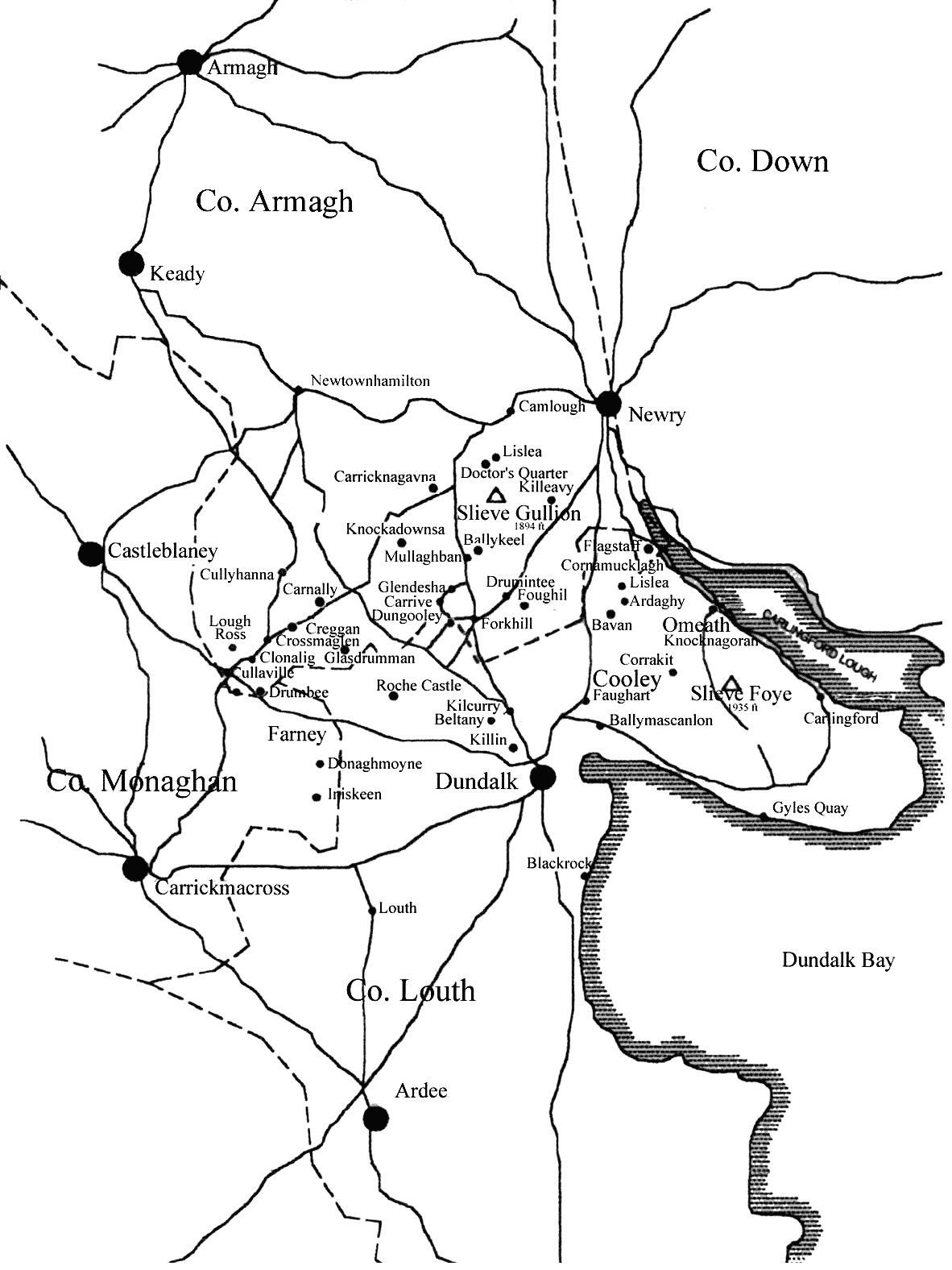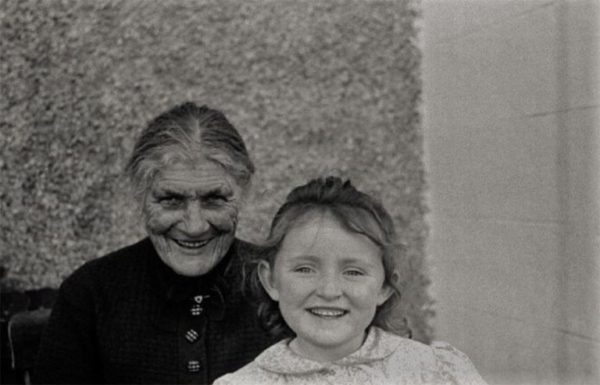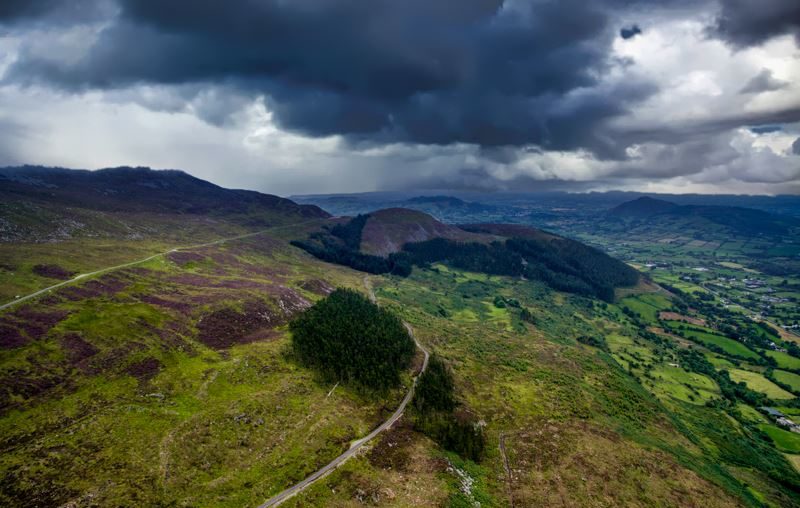Oriel Oral Traditions
‘To her deathbed came another old woman from the mountain, an Irish speaker also a friend of their early days. They saluted each other in Irish and having conversed for a while, blessed each other in Irish and parted forever …’
Frontier Sentinel, 29 June 1935 on singer Sarah McGlade, Lislea.
Oirialla – Oriel
Oirialla, known in English as Oriel, is an undefined cross border region, straddling two provinces of Ireland, extending from Carlingford on the east coast of the Cooley peninsula in County Louth, across south Armagh, through the south drumlins of Monaghan; north from the borders of County Down, south to the hinterlands of Drogheda.
Over the last millennium, its borders, from the river Boyne north to Fermanagh and Tyrone, have stretched and contracted across boundaries and provinces. Although in Leinster now, County Louth was in Ulster until the late 16th century. It was Ulster in dialect, song, literary activity, sensibility and allegiances.

Map of music landscape of Oriel in A Hidden Ulster-people, songs and traditions of Oriel P.Ní Uallacháin (2004)
Language
The Irish language, Gaeilge also referred to here as Gaelic was, in most parts, the vernacular of its people until the middle of the 19th century, and its dialect was Ulster, closely similar to the present day dialect of the Donegal Gaeltacht, heard here in the storytelling of Bríghid Ní Chaslaigh from Omeath, recorded in 1931 for the Wilhelm Doegan linguistic project. Brighid appears in the cover photographof A Hidden Ulster.
Within a short few generations, the Irish language, and its oral traditions, was replaced by English. Anna O’Hanlon, the last fluent native Irish speaker in Omeath, County Louth, died in 1969, and Irish in Counties Armagh and Monaghan, disappeared as the community language during the same period.

Anna O’Hanlon (1873-1969) from Omeath – the last native fluent Gaelic speaker in Oriel, with her granddaughter c. 1960. Copyright O’Hanlon family
While Irish flourished as the community language in Oriel, poetry, song, dance and instrumental music was the life blood of its community in times of sorrow, joy, celebration, grief, birth and death, in houses and homes, at public ritual and ceremony. With the dramatic and sudden annihilation of the native language by the machinations of church and state – with widespread famine, emigration, poverty and death – the artistic and creative linguistic voice of a people was silenced within a few generations; inter generational continuity of Gaelic oral arts was arrested and an insidious cultural memory loss crept in.

Kitty Campbell (1808-1913). The last native Irish speaker in Louth village. copyright Oriel Arts and A Hidden Ulster 2017
Oral Traditions
For two hundred years, from c. 1650 – 1850, Oriel was a region in which a rich literary and poetic tradition was actively cultivated, with songs by poets and harpers filtering into the songs of the people. A number of documentaries have been made about this heritage including this RTE documentary in 1971 – Voices of A Hidden People.
Fortuitously, there were farsighted collectors, both male and female and from various religious denominations, who recorded, collected, and photographed some of this cultural wealth as it was disappearing from living memory, at the turn of the 20th century. A century later, A Hidden Ulster – people, songs and traditions of Oriel was published in 2003, drawing on the disparate work of collectors and archives, libraries, recordings and photographs, to produce a repository of the rich cultural legacy of Oriel.
Due to a tenuous and fragile connection with the past, only a few Oriel songs had survived in the unbroken oral tradition to the present day. The instrumental music tradition has always been continuously strong in Oriel, with the exception of harp playing which had been orally transmitted, but collections of local dance tune manuscripts and collections, transcribed locally between 1817 and 1900, lay unopened in archives and libraries and out of print Journals, until published in A Hidden Ulster.
The Irish language has continued to be spoken as a first language in a growing number of bilingual homes in Oriel; it is on the school curriculum in the Irish Republic and taught diligently by individual enthusiastic teachers in the north of Ireland, with a growing movement of Irish medium schools. It has survived and is flourishing once again in Oriel. It is a modern European language and spoken by many of its younger inhabitants; traditional song in Irish is undergoing a steady vibrant renewal, while its instrumental music continues to thrive, with a renewed interest in the harp.
The term ‘Irish song’ includes song in Ireland, both in English and Irish. ‘Gaelic song’ is used to distinguish song in Irish.
‘Musician’ is used to denote both singers and instrumental musicians.
A Hidden Ulster -people, songs and traditions of Oriel is available on order from Four Courts Press, Dublin: (http://www.fourcourtspress.

